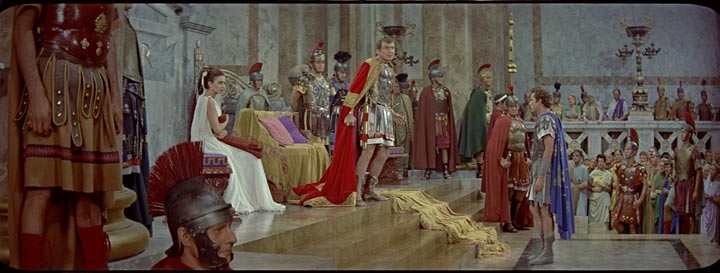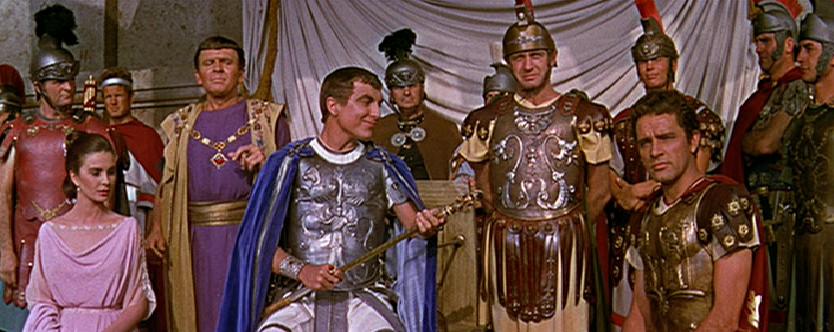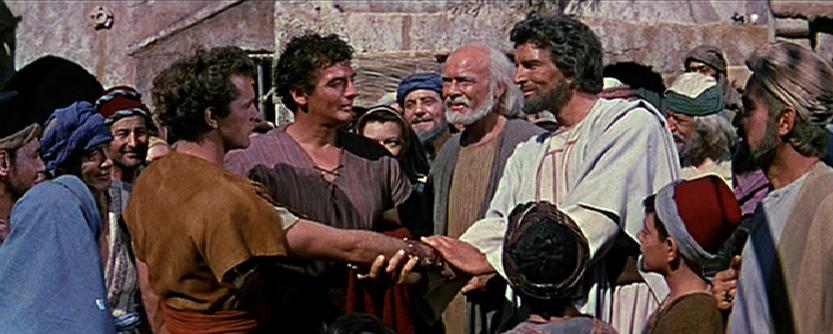This is a very short and very early article by Roland Barthes, one of his “Mythologies” that remains uncollected in English, that I translated in 1982, originally so it could be run with an article of mine, “Barthes & Film: 12 Suggestions,” that I published in Sight and Sound — although it wound up not appearing there due to a lack of space. (I did, however, use some extracts from it in an article I did for the same magazine two years later about Gentlemen Prefer Blondes; both of these articles are reprinted in my first collection, Placing Movies: The Practice of Film Criticism.) Many years later, in 1999, James Morrison asked me if he could post it on the Internet, and you can still access it, along with an essay of his about it, here. — J.R.
-
- If, for lack of the proper technical background, I can’t define Henri Chrétien’s [anamorphic] process, at least I can judge its effects. They are, in my opinion, surprising. The broadening of the image to the dimensions of binocular vision should fatally transform the internal sensibility of the filmgoer. In what respect? The stretched-out frontality becomes almost circular; in other words, the ideal space of the great dramaturgies. Up until now, the look of the spectator has been that of someone lying prone and buried, walled up in the darkness, receiving cinematic nourishment rather like the way a patient is fed intravenously. Here the position is totally different: I am on an enormous balcony, I move effortlessly within the field’s range, I freely pick out what interests me, in a word I begin to be surrounded, and my larval state is replaced by the euphoria of an equal amount of circulation between the spectacle and my body.
-
- The darkness itself is transformed: in the ordinary film, it is tomb-like, I am still in the cave of myths, I have a little flame of illumination which flickers far above me, and I receive the truth of the images like heavenly grace. Here, on the contrary, the cord that binds me to the screen is no longer thread-like, it’s a full volume of brightness that is established apart from me, I don’t receive the image by those long threads of light that one sees transfixing and feeding the stigmatists, I lean forward on my elbows, becoming as horizontal as the spectacle, and out of my larval state emerge as a little god because here I am, no longer under the image but in front of it, in the middle of it, separated from it by this ideal distance, necessary to creation, which is no longer that of the glance but that of the arm’s reach (God and painters always have outstretched arms).
- Obviously one must occupy the largest space in a new manner; perhaps the close-up will not survive, or at least its function will be transformed: kisses, sweat, psychology may all reinstate darkness and distance: a new dialectic between men and the horizon, men and objects, should come into view, a dialectic of interdependence and no longer one of décor. Properly speaking, this should be the space of History, and technically, the epical dimension is born. Imagine yourself in front of The Battleship Potemkin, no longer stationed at the end of a telescope but supported by the same air, the same stone, the same crowd: this ideal Potemkin, where you could finally join hands with the insurgents, share the same light, and experience the tragic Odessa Steps in their fullest force, this is what is now possible; the balcony of History is ready. What remains to be seen is what we’ll be shown there; if it will be Potemkin or The Robe, Odessa or Saint-Sulpice, History or Mythology.
First published in Les lettres nouvelles, February 1954
(translated by Jonathan Rosenbaum)
Copyright © 1999 by Jonathan Rosenbaum, James Morrison, and the estate of Roland Barthes, all rights reserved. This text may be used and shared in accordance with the fair-use provisions of U.S. Copyright law, and it may be archived and redistributed in electronic form, provided that the editors are notified and no fee is charged for access. Archiving, redistribution, or republication of this text on other terms, in any medium, requires the notification of the journal and consent of the authors.





